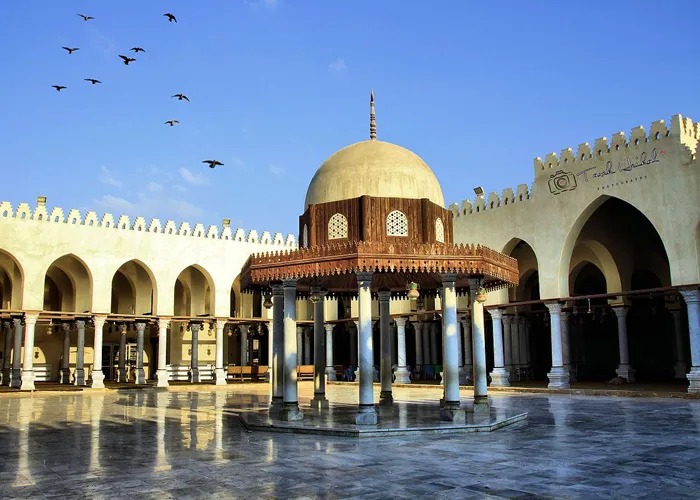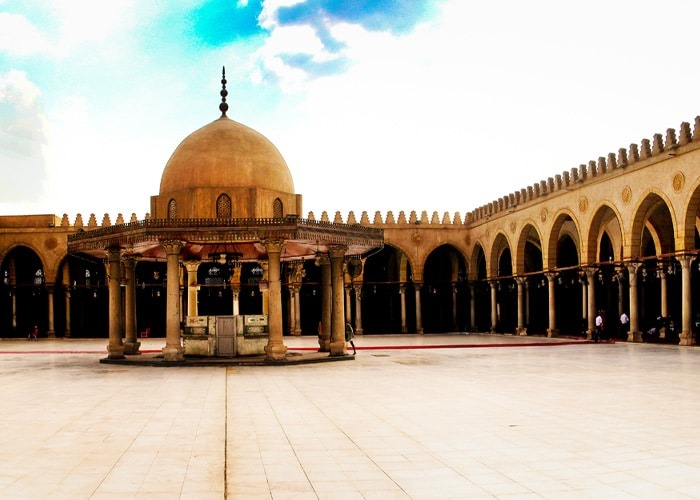Amr Ibn Al-As:
Introduction
Amr Ibn Al-As is remembered as one of the most influential figures in Islamic and Egyptian history. For travelers exploring Cairo, the mosque of Amr Ibn Al-As is not only a religious site but also a landmark that connects the past with the present. Built in 641 CE, this mosque is considered the first mosque on the African continent, marking the beginning of Egypt’s Islamic era. Known in different forms such as amr ibn al as mosque, mosque of amr ibn al as, or masjid amr ibn al as, it continues to be a destination where history, architecture, and spirituality converge. Visitors often find that a journey to the mosque of amr ibn al as offers both cultural enrichment and an inspiring glimpse into the roots of Islamic Cairo.
The Life and Legacy of Amr Ibn Al-As
Amr ibn al as was not only a commander but also a statesman and one of the close companions of the Prophet Muhammad (peace be upon him). His reputation for intelligence, diplomacy, and leadership played a crucial role in the expansion of the Muslim world. Leading the conquest of Egypt in 641 CE, he established Fustat, the first Islamic capital of Egypt, which laid the foundation for what later became Cairo.
The name amr ibn al-as appears in multiple variations, such as amr bin aas, amr ibn aas, or amr bin as, yet all refer to the same remarkable figure. His leadership extended beyond military campaigns—he implemented administrative systems and fostered relations that helped stabilize Egypt under Muslim governance. For travelers, understanding who amr ibn al as was deepens the experience of visiting the mosque that bears his name. It connects them not only to the physical site but also to the life of a man who significantly shaped the history of Egypt and Islam.
Exploring the mosque of amr provides a meaningful way to reflect on his enduring influence. It was under his guidance that the first mosque in Africa was built, serving as a cornerstone for Islamic worship and learning in the region. This legacy ensures that amr ibn al as remains a celebrated and respected figure in history.
Founding of the Mosque of Amr Ibn Al-As
The mosque of amr ibn al as, also known as masjid amr ibn al as, is often referred to as the “Crown of Mosques” due to its historical importance. When it was first built in 641 CE, its design was simple, using palm trunks and mud bricks. The original mosque reflected the modest beginnings of Islamic architecture in Egypt. It was not only a place for prayer but also a gathering point for the community, symbolizing the establishment of Islam in Egypt.
Over the centuries, the amr ibn al as mosque has undergone several reconstructions and expansions by different rulers, including the Abbasids, Mamluks, and Ottomans. These changes gradually transformed it from a modest structure into a more elaborate religious complex. Each renovation added elements that reflected the architectural styles of the time, making it a living chronicle of Egypt’s history.
Today, travelers who visit the mosque of amr witness a site that represents both spiritual and cultural significance. The mosque is more than just a historic landmark; it embodies the resilience of Cairo’s Islamic heritage. For many, visiting the amr ibn al as mosque becomes a journey through centuries of history layered within its walls.

Architectural Features of the Mosque
The amr ibn al as mosque stands out for its design, which combines simplicity with elegance. Its rectangular layout features a large central courtyard surrounded by arcades supported by repurposed Roman and Byzantine columns. This blend of reused materials highlights Egypt’s layered cultural history and the transition from ancient civilizations to the Islamic era.
One of the key features of the mosque is its prayer hall, which includes a mihrab indicating the direction of Mecca. Though the mosque has been rebuilt many times, its layout continues to reflect the early principles of Islamic architecture. The open courtyard provides light and space, creating a peaceful atmosphere for prayer and reflection.
Travelers are often drawn to the visual charm of amr ibn al-as mosque photos, capturing the symmetry of its columns and the openness of its courtyard. Unlike more ornate mosques in Cairo, the mosque of amr maintains a humble elegance that emphasizes function and spirituality. This simplicity makes masjid amr ibn al as a unique stop on any tour of Cairo’s religious landmarks.
Religious and Cultural Importance
The mosque of amr ibn al as holds a special place as the first mosque in Egypt and across Africa. Its establishment symbolized the arrival of Islam in the region, making it a cornerstone of religious and cultural identity. For centuries, it served as both a place of worship and a center for learning and community gatherings.
Visiting the amr ibn al as mosque offers travelers an opportunity to experience a site that has been central to Egypt’s spiritual life for nearly 1,400 years. The mosque has witnessed prayers, sermons, and countless gatherings that shaped the religious and social fabric of Cairo. It continues to be a functioning mosque, welcoming worshippers and visitors alike.
For travelers interested in the broader context of Islam in Egypt, the mosque of amr represents a starting point. It reminds visitors that Egypt’s Islamic history began here, in a modest yet enduring structure that has stood the test of time. Exploring this site offers more than a tour—it provides a spiritual connection to the roots of Islamic Cairo.

The Mosque in Modern Times
Today, the amr ibn al as mosque remains a vibrant part of Cairo’s religious life. Despite centuries of renovations, it continues to function as a house of worship and a gathering place for the community. Modern travelers visiting the mosque of amr can witness its enduring role in everyday life, as people come to pray, reflect, and learn.
The mosque’s significance extends beyond worship—it is also a cultural landmark. Guided tours often highlight the history of amr ibn al as, the various architectural phases of the mosque, and its place in Cairo’s heritage. Photographers are drawn to amr ibn al-as mosque photos, which capture the beauty of its design and the atmosphere of its surroundings.
For those organizing trips to Cairo, including the mosque of amr ibn al as in an itinerary adds depth to the experience. It allows travelers to explore not only Cairo’s famous monuments but also the spiritual origins of its Islamic culture. The amr ibn al aas mosque is more than a historic site; it is a living part of Egypt’s identity that continues to inspire visitors from around the world.
Conclusion
The legacy of Amr Ibn Al-As and his mosque is woven into the history of Egypt and the Islamic world. As the first mosque built in Africa, the mosque of amr ibn al as holds immense historical, religious, and cultural significance. For travelers, visiting masjid amr ibn al as is not just a step into Cairo’s past but also an encounter with a living tradition that has endured for centuries.
From its modest beginnings to its modern-day role as a center of worship, the amr ibn al as mosque stands as a testament to the resilience of faith and culture. Whether known as amr ibn al as, amr ibn al-as, or amr bin aas, his name remains tied to this enduring landmark. For anyone exploring Cairo, a visit to the mosque of amr ibn al as offers a unique opportunity to connect with history, spirituality, and the rich heritage of Egypt.

